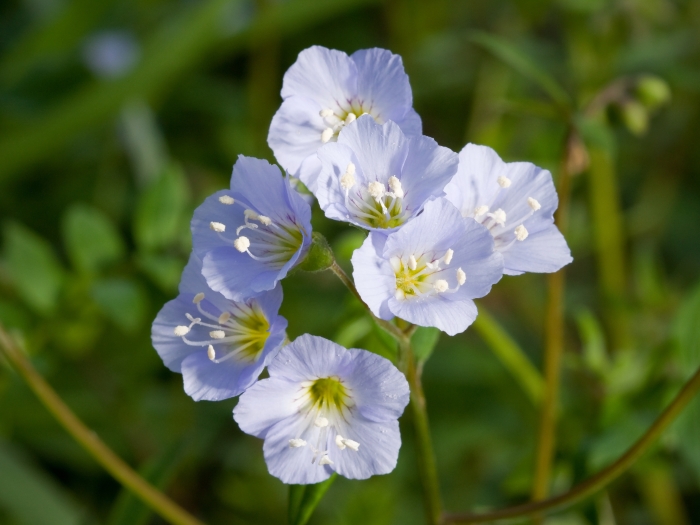Spreading Jacob’s Ladder
(Polemonium reptans)
Spreading Jacob’s Ladder (Polemonium reptans)
/
/

Ryan Kaldari
Public domain
Image By:
Ryan Kaldari
Recorded By:
Copyright:
Public domain
Copyright Notice:
Photo by: Ryan Kaldari | License Type: Public domain | License URL: https://creativecommons.org/publicdomain/zero/1.0/ | Uploader: Kaldari | Publisher: Wikipedia Commons | Title: Polemonium_reptans_2009.jpg | Notes: Creeping Jacob's Ladder (Polemonium reptans) at Cheekwood Botanical Garden in Nashville, Tennessee, USA. |














































































Estimated Native Range
Summary
Polemonium reptans, commonly known as Spreading Jacob’s Ladder, is a deciduous perennial herb that is native to rich, moist woodlands and meadows in Eastern and Central USA. It typically grows to 50 centimeters (20 inches) tall and features compound pinnate leaves up to 20 centimeters (8 inches) long with 5–13 leaflets. The plant is known for its loose clusters of bell-shaped, blue to violet flowers that bloom in spring and are quite showy, attracting a variety of pollinators.
Spreading Jacob’s Ladder is valued for its attractive foliage and delicate flowers, which make it a popular choice for shade gardens, woodland plantings, and borders. It is also used to support local pollinators, as it provides both pollen and nectar. The plant spreads by self-seeding and can form colonies over time. It requires consistently moist soil and is best grown in partial shade, although it can tolerate full sun if the soil remains moist. It is generally low-maintenance but can be susceptible to powdery mildew and rust, especially in humid conditions.CC BY-SA 4.0
Spreading Jacob’s Ladder is valued for its attractive foliage and delicate flowers, which make it a popular choice for shade gardens, woodland plantings, and borders. It is also used to support local pollinators, as it provides both pollen and nectar. The plant spreads by self-seeding and can form colonies over time. It requires consistently moist soil and is best grown in partial shade, although it can tolerate full sun if the soil remains moist. It is generally low-maintenance but can be susceptible to powdery mildew and rust, especially in humid conditions.CC BY-SA 4.0
Plant Description
- Plant Type: Herb
- Height: 1-1.5 feet
- Width: 1-1.5 feet
- Growth Rate: Moderate
- Flower Color: Blue, Purple
- Flowering Season: Spring
- Leaf Retention: Deciduous
Growth Requirements
- Sun: Full Sun, Part Shade
- Water: Medium
- Drainage: Medium, Slow
Common Uses
Bee Garden, Bird Garden, Border Plant, Butterfly Garden, Deer Resistant, Erosion Control, Fragrant, Groundcover, Hummingbird Garden, Potted Plant, Rock Garden, Showy Flowers
Natural Habitat
Rich, moist woodlands and meadows
Other Names
Common Names: Greek Valerian , Creeping Jacob’s Ladder , False Jacob’s-Ladder , Abcess Root , American Greek Valerian , Blue Bells , Stairway To Heaven , Sweatroot , Polémoine Rampante , Valériane Grecque , Krypblågull
Scientific Names: Polemonium reptans , Polemonium humile , Polemonium quadriflorum , Polemonium reptans f. macrophyllum , Polemonium reptans f. quadriflorum , Polemonium reptans var. macrophyllum
GBIF Accepted Name: Polemonium reptans L.